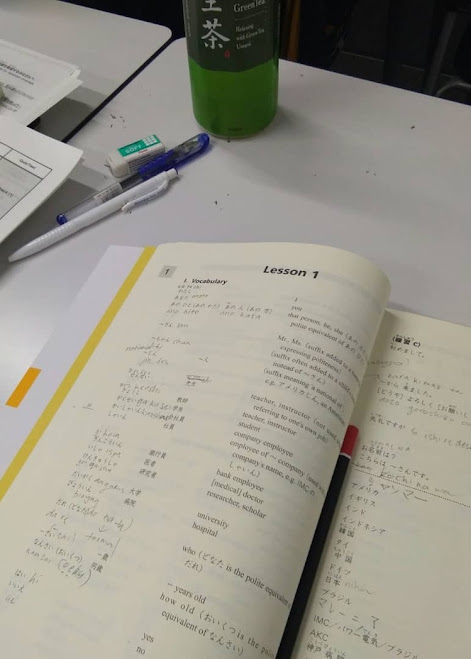Basic Japanese Character: Katakana
I presume you have learned Hiragana before you dive into Katakana as you really need to memorize all the characters in Hiragana before learning Katakana. For me, Katakana is like another word for Hiragana. Even all the characters are different, but you will find the similarity of the characters such as カ for か.
The following characters are the basic Katakana
ア イ ウ エ オ
A I U E O
カ キ ク ケ コ
KA KI KU KE KO
サ シ ス セ ソ
SA SHI SU SE SO
タ チ ツ テ ト
TA CHI TSU TE TO
ナ ニ ヌ ネ ノ
NA NI NU NE NO
ハ ヒ フ ヘ ホ
HA HI FU HE HO
マ ミ ム メ モ
MA MI MU ME MO
ラ リ ル レ ロ
RA RI RU RE RO
ヤ ユ ヨ
YA YU YO
ワ ヲ
WA WO
ン
N
There are 46 basic Katakana. I know there is a lot of confusion and I have to admit that, especially for ワ, ラ, ヲ, フ, ス, ウ, ク, and タ. Even me myself take some time to memorize it every each of them. However, with enough practice, nothing is impossible. Now we will go through another additional 25 Katakana with additional sounds. Again, do not jump to 25 additional Katakana without mastering the first 46 Katakana.
ガ ギ グ ゲ ゴ
GA GI GU GE GO
ザ ジ ズ ゼ ゾ
ZA JI ZU ZE ZO
ダ ヂ ヅ デ ド
DA ZHI DZU DE DO
バ ビ ブ ベ ボ
BA BHI BU BE BO
パ ピ プ ペ ポ
PA PI PU PE PO
Before going through another 33 Katakana, again, memorize all 71 Katakana. Without which, I can assure you the last 33 will be extremely difficult as you will have to recall 11 different lines of Katakana with combined pronunciation or single syllable.
キャ キュ キョ
KYA KYU KYO
ギャ ギュ ギョ
GYA GYU GYO
シャ シュ ショ
SHA SHU SHO
ジャ ジュ ジョ
JA JU JO
チャ チュ チョ
CHA CHU CHO
ニャ ニュ ニョ
NYA NYU NYO
ヒャ ヒュ ヒョ
HYA HYU HYO
ビャ ビュ ビョ
BYA BYU BYO
ピャ ピュ ピョ
PYA PYU PYO
ミャ ミュ ミョ
MYA MYU MYO
リャ リュ リョ
RYA RYU RYO
Congratulation! You have gone through the last 33 Katakana, with a total of 104 Katakana.
Disclaimer: Opinions expressed are solely my own and do not express the views or opinions of my employer. All views expressed on this site are my own and do not represent the opinion of any entity whatsoever with which I have been, am now, or will be affiliated. This is a personal blog - not a peer-reviewed journal or a sponsored publication. We make no representation as to accuracy, correctness, completeness, suitability, or validity of any information on this site and will not be liable for any errors, omissions, or delays in this information or any losses injuries or damage arising from its display use. This is not a recommendation to participate, buy, sell, subscribe, purchase, of any goods, services, entity mentioned. Any action that you took and/or may take as a result of the information, analysis, experience, opinion, commentary, or knowledge on this blog is ultimately your responsibility, It is the reader's responsibility to verify their own facts.




Thank you for sharing and want to continue learning Japanese from you.
ReplyDelete